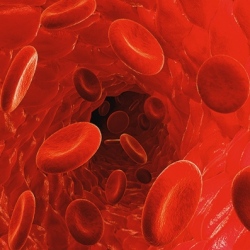
Stem cell biologists reported that blood levels of GDF11 drop in mice as the animals get older and that injecting old mice with GDF11 can partially reverse age-related thickening of the heart. In two papers last year, they also reported that GDF11 can rejuvenate the rodents’ muscles and brains.
Wagers and Lee group says the assay Novartis used to detect GDF11 and GDF8 was itself flawed. They found that the main protein detected by the antibody test is immunoglobulin, another protein that rises in blood level with age. Mice lacking the gene for immunoglobulin tested negative for the active form of GDF11/8 that the Novartis assay was thought to reveal, they report today online in Circulation Research.
“They actually had very consistent findings to ours with respect to the blood levels of GDF11/8 with the antibody we all used,” Wagers says. But “their interpretation was confused by this case of mistaken identity.” A recently published study by University of California, San Francisco, researchers finding that GDF11/8 blood levels decline with age in people and are low in those with heart disease supports the contention that GDF11 has an antiaging role, her paper notes.
The Harvard team’s paper also disputes a recent study in which cardiac physiologist Steven Houser’s group at Temple University in Philadelphia, Pennsylvania, found that GDF11 injections have no effect on heart thickness in older mice. The problem, according to Wagers, is that commercially purchased GDF11 can vary in the actual level and activity of protein. “It wasn’t something that affected us early on, but we figured out it was an issue,” she says. That lot-to-lot variability likely explains why the Houser group didn’t see any effects from GDF11 at the same apparent dose the Harvard group reported using, she adds. (Lee says his group now suspects that the dose was higher than they realized.)
To back up their earlier results, Wagers and collaborators again show in the new paper that daily GDF11 injections can shrink heart muscle in both old and new mice. But this time they note another observation: The mice also lost weight. “We don’t have much insight into that right now, but we’re looking into it,” Wagers says. She says the findings suggest that as with other hormones, GDF11 may have “a therapeutic window” for beneficial effects, too much may cause harm.
Houser says he agrees that one of the Novartis team’s assays for GDF11 was probably detecting immunoglobulin. But Houser notes that the group also used a different assay to detect GDF11 and that isn’t challenged by the new paper. (David Glass makes the same point.) Sorting out what role GDF11 may play in aging is important, Houser adds. “I’m going to be 65 in a couple months. I’d love to have something that improves my heart, brain, and muscle function,” Houser says. “I think the field is going to figure this out and this is another piece of the puzzle.”
